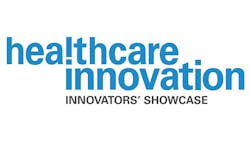Why do readmissions continue to plague hospitals?
There’s one primary reason: It’s very difficult to control patients’ behavior once they are discharged. For example, hospitals cannot control whether patients take medications as prescribed, follow-up with providers and comply with other discharge instructions. This is a huge challenge for hospitals trying to reduce readmissions for conditions listed in the Hospital Readmissions Reduction Program (HRRP) of 2012:1 Chronic lung disease, coronary artery bypass graft, heart attacks, heart failure, hip and knee replacements and pneumonia. These are high-volume, high-cost readmissions, which is why CMS continues to target them.
Social determinants of health (SDOH)—the conditions in which people are born, grow, live, work and age—influence how likely it is that a patient will follow their discharge recommendations. Unfortunately, hospitals sometimes overlook these factors because they rely entirely on clinical data that only tells part of the story. This means they may not ever address the root cause of the readmission. Thus, the cycle continues.
The 21st Century Cures Act gives CMS authority to change the HRRP to account for patient social risk, but it remains unclear whether the agency will move forward with doing so. CMS is currently studying the effect of individuals’ social risk factors on value-based payment programs with a final study set to publish in October.2
Interestingly, the ICD-10-CM Coordination and Maintenance Committee has proposed approximately 20 new diagnosis codes3 that address problems related to education and literacy, employment status, housing and economic circumstances and social environment.
Regardless of whether CMS changes the HRRP, one point remains clear: Prediction is an important step in reducing readmissions. For example, patients who don’t have family members nearby may not have access to transportation to attend follow-up medical appointments with a cardiologist after an admission for a heart attack. Health literacy is another challenge. Some patients may not understand discharge instructions following a coronary artery bypass graft, putting them at risk for non-adherence (and readmission) post-discharge. Or patients living in an area with minimal walkability may be at risk for developing a blood clot after a hip replacement, putting them at risk for a readmission. Many other factors (e.g., employment, neighborhood conditions, civic involvement and more) also affect whether someone is at risk for readmission.
The good news is that predictive models have been on the healthcare scene for decades, providing actionable insights at the point of care. Now organizations can apply these models to SDOH data to predict readmissions in real time—before patients are even discharged. When hospitals integrate these analytics into their EHRs, they begin to truly move the needle on reducing readmissions.
Why is it important for hospitals to predict readmissions?
If hospitals know what patients are likely to fall through the cracks post-discharge, they can inform discharge planning at the point of care and implement care-planning strategies to boost patient engagement.
Other benefits include the ability to:
• Prioritize resources and improve staff effectiveness. Staff can work the list of patients requiring follow-up care based on predicted risk rather than just discharge time or unit location.
• Provide higher-quality care to patients. Lower readmissions are a win-win for patients and hospitals alike.
From a financial standpoint, being able to predict readmissions allows organizations to:
• Avoid three percent payment reductions under the HRRP.1
• Avoid potential penalties for excessive readmissions under other value-based healthcare regulations and contracts.
• Improve STAR ratings to increase Medicare reimbursement.
• Reduce overall costs—an important aspect of value-based payments, including the MIPS program that saw an increase in the weighting of the cost category to 15 percent this year (up from 10 percent in 2018).
• Select MACRA performance metrics related to readmissions to support potential payment increases.
The most effective way to overcome these challenges is to involve key stakeholders. To be successful, these stakeholders need educational resources, community connections and actionable data insights. The data must be continually refreshed, standardized and clinically validated to ensure that hospitals can make accurate predictions about readmissions and allocate resources accordingly. Hospitals that tap into the power of data analytics will be able to identify innovative solutions and workflows to reduce readmissions once and for all.
To learn more. Call 866.393.7703 or visit risk.lexisnexis.com/healthcare
REFERENCES
1. https://www.cms.gov/Medicare/Medicare-Fee-for-Service-Payment/AcuteInpatientPPS/Readmissions-Reduction-Program.html
2. https://aspe.hhs.gov/social-risk-factors-and-medicares-value-based-purchasing-programs
3. https://www.cdc.gov/nchs/data/icd/Topic-packet-March-2019-Part-2Vs3.pdf



